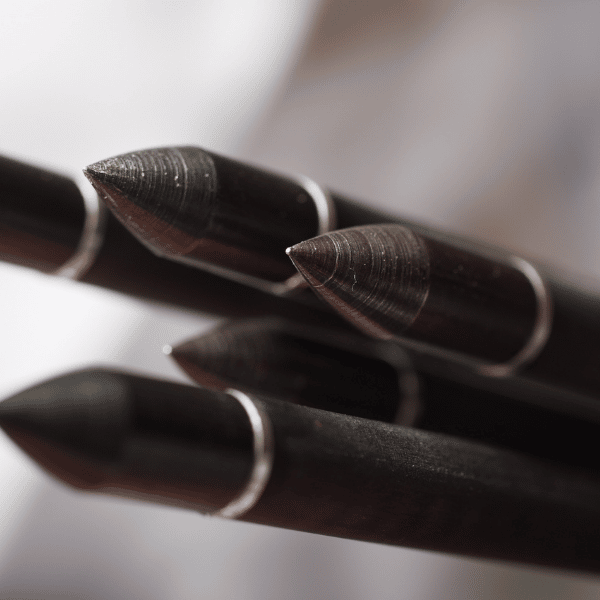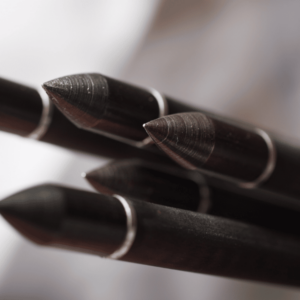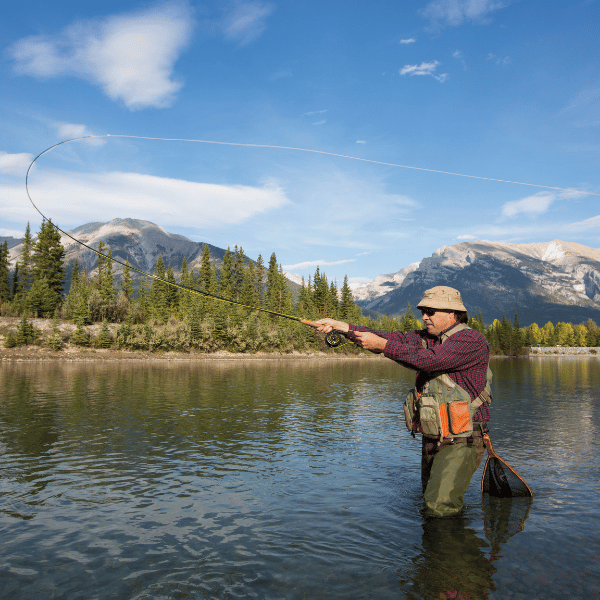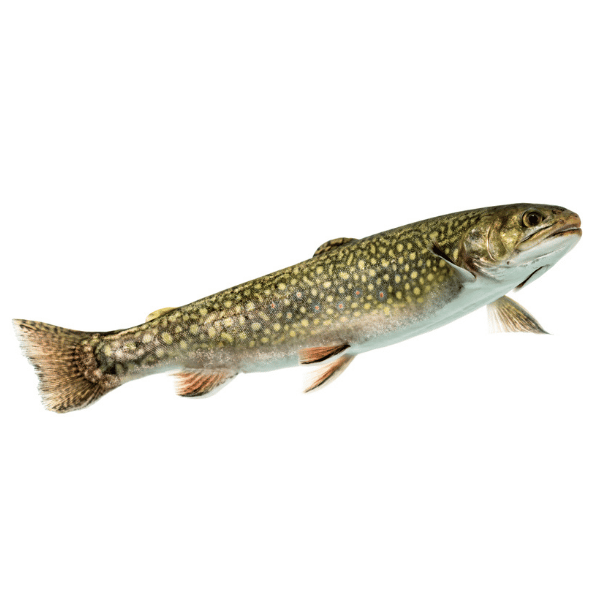

If you ask anyone about their arrows for hunting, they will almost never talk about arrow weight. They will almost always go right to talking about some crazy arrow tips they discovered.
Arrow weight is often the most passively decided feature of an arrow set up, even though:
- Arrow weight affects both accuracy and impact power.
- Arrow weight arguably has more influence on your ability to take down a target compared to the arrow tip.
- Arrow weight has the ability to make a great hunter from a shot mechanics perspective have a horrible shot.
In the rest of this article we will go through some research we compiled from our studies and talking with professionals on how to measure arrow weight and choosing the best arrow weight for hunting.
Contents
Arrow Weight for Hunting
Arrow weight for hunting plays a big factor in how fast an arrow travels and the arrow’s ability to penetrate a target. Arrow weight is as important as arrow tips, fletching, length, or any other feature of your arrow.
However, when most people discuss arrows they are almost always discussing arrow tips. Almost like the arrow tip is the magic sauce of the arrow.
I agree that arrow tips are one of the more interesting features to talk about when it comes to arrows. In reality, arrow tips only matter for the last moment of the arrow’s job – penetrating your target.
Even the most impressive tip will not do much good if your arrow does not land on target with the intended force to get the job done. Over 99% of the work done by an arrow after it leaves your bow is dependant upon the weight and fletching of the arrow.
Taking a further step back, the arrow weight can have an effect on how well your bow performs and your shooting mechanics. The weight of an arrow has a role in your ability to maintain good shooting mechanics of your body down to the amount of play you might have when drawing your bow.
How is Arrow Weight Measured?
Arrow weights are measured in grains per inch, also known as GPI, since arrows can have different lengths. One grain is equal to about 0.0023 ounces, or roughly 0.065 grams. The total weight of an arrow is calculated by multiplying the grains per inch by the length of the arrow in inches.
So, the overall weight is affected by length, but GPI is affected by several factors.
First, a thicker shaft will have a higher GPI than a thinner shaft is made from the same material. Material is another major consideration.
Arrows can be made of wood, aluminum, composite, fiberglass, or carbon fiber. Depending on what your arrows are made of, they’ll weigh more or less.
One other thing people fail to consider is that arrow weight isn’t just about the shaft. Tips, nocks, wraps, fletchings, and other features will also determine the weight.
If you’re not sure how much all of the features weigh on custom arrows, a simple method is to put an arrow on a kitchen scale. You can also get this scale that weighs in grains.
Categorizing arrows as “light” or “heavy” is a risky game, but there are three general categories. Anywhere from 350 up to about 450 grains would be considered a light arrow. Anything from about 450 to 550 grains is an ordinary arrow. Anything over about 600 grains would fall firmly into the “heavy” category. Compound bow archers will rarely shoot anything heavier than 700 grains. Longbow and recurve archers will often use much heavier arrows.
What is FOC? (Front of Center)
FOC of an arrow, also known as front of center, is a measurement of how much of the arrow’s weight is distributed towards the front end. This has a major impact on the trajectory, and can also affect the angle at which your arrow strikes its target.
Is a Heavier Arrow Better for Hunting?
Heavier arrows are usually better for hunting, but that’s not always the case. To understand why, it’s important to understand how weight affects your arrow’s flight characteristics. Once you understand how light, medium, and heavy arrows perform in flight, it’s easy to see when you’d want to use a different weight.
Lightweight Arrows
The first thing you’ve probably noticed about practice arrows is that they tend to be very light. This is for a couple of reasons. To begin with, lighter arrows require less energy to accelerate them to full velocity. As a result, they fly faster, which translates to a straighter flight path.
The obvious advantage of this is that they’re more accurate, which is perfect for shooting tight groupings. However, smaller imbalances can make a bigger difference causing light arrows to be harder to tune. A lightweight arrow is also a disadvantage on windy days when they can easily get blown off course.
Finally, and maybe most importantly, an arrow that’s too light can cause excess bowstring vibration and damage your bow. Always follow your manufacturer’s instructions for minimum arrow weight, or your bow can get damaged and your warranty voided.
Heavyweight Arrows
Heavy arrows, on the other hand, require more energy to accelerate. This means they absorb more energy from the bow and require a stronger bow to achieve maximum speed. On the same note, a heavier arrow requires a much stronger breeze to blow a heavy arrow off course.
Heavyweight arrows do provides increased penetration abilities. This is great for hunting, but horrible at the range when you need to dig your arrows out of the target.
Generally, the larger the game you are hunting and the further the distance you need your arrow to travel to hit your target, the heavier the arrow you will need. That said, there’s a time and a place for hunting with a lightweight arrow.
Slender, 350-400-grain arrows are ideal for small game. A heavier arrow can startle these animals, and they’re fast enough to move even while the arrow is in flight. A lighter arrow will get there faster, giving them less time to react.
How Do I Choose the Best Arrow Weight?
Know the Bow’s Arrow Weight Limits
As a general rule, you should never use an arrow that’s lighter than five grains per pound of draw weight. Using an arrow lighter than this will most likely cause damage to your bow, especially if done repeatedly.
To calculate the minimum arrow weight you should use in grains, simply multiply the draw weight of your bow by five. This is the minimum arrow weight in grains.
For example, suppose you’re using a 60-pound bow. The minimum arrow weight for a 60-pound bow:
60 x 5 = 300 minimum grain arrows
Similarly, a very heavy arrow may not build up sufficient speed to fly properly. The rule of thumb here is that your arrow should not weigh more than eight grains per pound of pull.
Continuing our example, the maximum weight of an arrow for a 60-pound bow:
60 x 8 = 480 maximum grain arrows
Remember, bigger is not necessarily better! Your bow needs to be strong enough to handle the arrow.
*Special Note* – There’s also some flexibility here. Lighter bows can handle closer to 9-10 grains per pound of pull, so it’s best to do some research on your particular bow.
For any given bow, an arrow that weighs five to six grains will generally be considered light, while a heavier arrow would be considered heavy. As you can see, the broad guidelines we gave in the last section really were broad.
Arrow Weight When Selecting Arrow Shaft First
If you’re going to choose your shafts first, you’ll need to start with the shaft length required for your bow. For modern bows, add between ½ and one inch to your draw length, and you’ve got your arrow length.
For example, if your compound bow has a draw length of 27 ½ inches, you’ll want arrows between 28 and 28 ½ inches in length.
Next, look at the weight of that shaft in GPI and multiply by the number of inches to figure out the remaining weight available for your remaining components.
For example, if your shaft weighs 14 GPI and is 29 inches long:
14 x 29 = 406 grains
Your shaft weighs 406 grains, so you could choose a broadhead and fletchings that total up to your desired weight from there.
Arrow Weight When Selecting Arrow Shaft Last
Because your arrow weight will include all parts of the arrow, it can sometimes be helpful to consider the shaft last. Find a broadhead and fletchings you like, weigh them, and see how heavy your shaft can be by subtracting the weight of these components from your target arrow weight.
What About Arrow Spine?
Arrow spine measurement is the measure of how flexible an arrow is.
This is a very important factor when choosing an arrow. Unfortunately, it’s nearly impossible for beginners to know what spine is best.
The first reason for this is that the ideal stiffness depends on your personal style and technique. If you’re not already an experienced shooter, you can spend hours searching for the “perfect” spine, only to find that it’s 100 percent wrong for you.
A second reason is that not all manufacturers describe the spine the same way. Online sellers, for instance, will generally not mention it at all. Instead, they’ll talk about what draw weight of bow their arrows are designed for, which itself is a broad generalization.
The long and short of it is that the spine can be overly confusing. Unless you are a perfect shot every time and the only thing throwing you off is how flexible the arrow spine is, which would be hard to determine anyway, your best bet is to focus on weight. Dial-in your shot with the perfect arrow weight, then try using the same arrow weight with different spines to see if you can find one that works better than the other for you.
Is a Compound Bow Better Than a Crossbow?
Before we talk about which type of bow is better, compound bow vs crossbow, let’s be perfectly clear. There’s no “right” or “wrong” answer here. It all depends on what you want to achieve, as well as what you’re trying to hunt.
At the end of the day, the best type of bow is going to be the one that lets you make the most reliable, humane kill. If that means using a crossbow, use a crossbow. Or use a compound bow if that is a better fit.
So, why would someone want to choose one over the other?
Why Buy a Crossbow vs Compound Bow?
For one thing, crossbows are a better choice for people with many disabilities. Yes, there are plenty of archers in the Paralympics who are insanely accurate. But for the average person with back, neck, or shoulder pain, the practice required for compound bow hunting can be needlessly painful and uncomfortable.
Using a crossbow isn’t just easier, it’s also the more ethical option. You will be able to get more practice and you will be better prepared to make a clean kill.
Draw weight isn’t just an issue for people with chronic pain or disabilities. It can be a problem for younger people, or for anyone with a very small frame. If you can’t reliably draw and fire at least a 40 to 45-pound bow, you can’t ethically hunt with one. Because a crossbow is hand-cranked, it doesn’t require as much strength to operate. Similarly, practice time can be a concern for anybody. If you only have a few hours a year to spend at the range, a crossbow is a much better choice.
Why Buy a Compound Bow vs Crossbow?
On the other hand, many people love spending time at the range as a form of recreation in its own right. A trip to the range is a great way to spend a few hours on a Saturday. Also, if you’ve got a reasonably large property, you can even shoot after work in your backyard.
If you want to do a lot of target shooting when you’re not hunting, a compound bow can be a better choice. For one thing, you don’t have to cock it after each shot. For another thing, you get to enjoy the increased challenge that comes from shooting a more demanding bow. Also, you can further customize the experience with items such as compound bow stabilizers.
Another advantage of compound bows is their versatility. Many states only allow crossbow hunting for people who are physically unable to use a compound bow.
Unless you’re disabled, you won’t be able to use a crossbow in those states. Even in states that do allow crossbow hunting for the general population, it’s often limited in scope. For instance, New York allows compound bow hunting a full two weeks before you’re allowed to get in the field with a crossbow.
This gives compound bow hunters the first shot at all the prize bucks, as well as two extra weeks of hunting. If you want to spend the most possible time in the field, a compound bow is a better choice.




